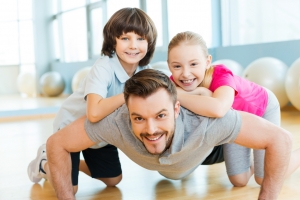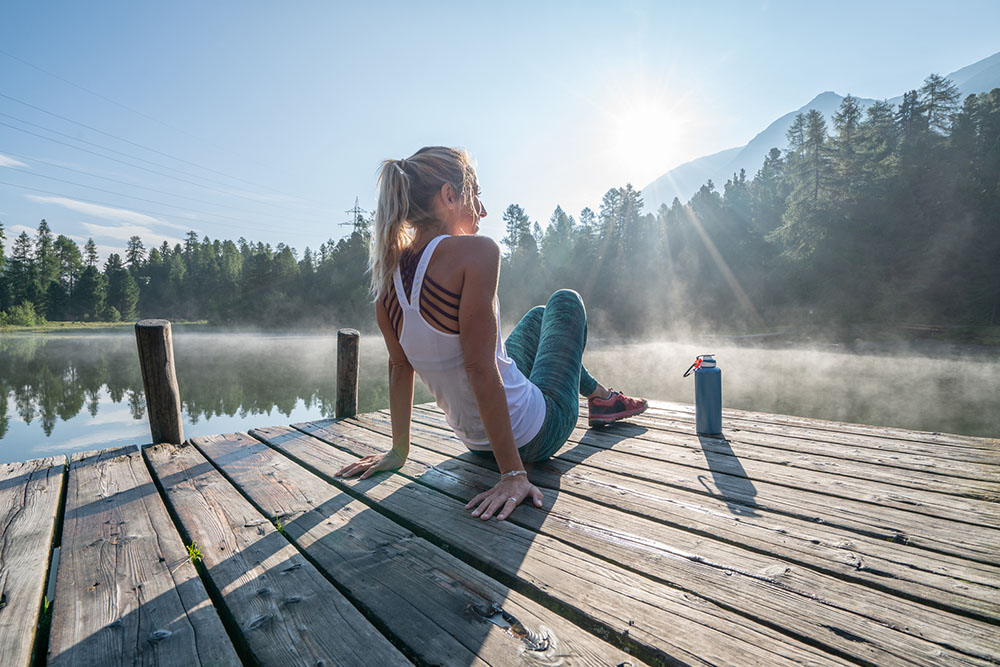#Dadblog: Rest And Active Recovery

Mike Caterini
Key West Florida was the setting for my final Triathlon of the year on December 3, 2016. This Olympic distance triathlon (1.5 km swim, 40 km bike, 10 km run) was completed in the relatively modest time of 3 hr 43 min, which placed me 14 out of 18 participants in the 55 to 59 year age group. I was satisfied with my results and relieved that I had recovered from my injuries sustained at the Gravenhurst Sprint Triathlon last July.
Healing the trauma of body and mind was a deliberate, yet gradual, process over the period from late summer to mid-autumn of last year. During my August summer vacation I realized how my injuries had limited my training. Learning from this experience I finished my vacation feeling more relaxed and in less pain. I will share this time with you, and in particular, how I adjusted my workouts and modified my expectations to accommodate my temporary limitations.
After checking into my hotel in old Montreal on the second stage of my summer vacation I vowed to allow my body to rest and recover. No working out at all. I planned to just walk around town and enjoy the sights, attractions and fine dining that this cosmopolitan city had to offer.
Related Article: #Dadblog: A Triathlon Comeback
Whenever I tour a large city I carry the Frommers Day by Day guide for that particular city and follow the walking tours described. The guide has enough information for a 4 or 5 day visit, can fit into your pocket, and contains foldout maps of the downtown core and public transit routes. Walking is my preferred mode of touring. Not only does walking allow one to get up close to the sights at their leisure, but it is also the natural way for humans to get around and stay in shape.
With my tour book and metro guide in hand, Judy and I set out on day long walking tours. We wandered through old Montreal, hiked up Mont Royal and frequented the bars and cafes of Crescent Street. We shopped on Rue St Catherine and bought fresh produce and cheese at the Atwater Market. Montreal is surprisingly hilly and following my daily walks of over 10 miles I always looked forward to my 2 hour nap in the late afternoon. Of course I didn’t walk 10 miles continuously non-stop. My walks consisted of a mix of breaks, stops, starts, browsing and brisk walks. This regimen is not tiring when taken in segments with frequent breaks, but the miles do add up and I definitely felt it at the end of the day.
After four days in Montreal I arrived in Ottawa for a long weekend. Ottawa has an extensive path network that criss-crosses the city. After a morning spent touring the Canadian Parliament Buildings I decided to attempt to run along the famous Rideau Canal that bisects the city, planning to end my run at the impressive locks at the Ottawa River. The afternoon was hot and sunny. With the Rideau Canal on my right I started out on my planned 10 km run at a moderate 7:15 min/km pace.
Seeing the boaters, canoeists, ducks and loons breaking the flat water eased the monotony of the long run and helped to take my mind off the persistent stitch on my left side caused by my broken ribs. The route was flat, peaceful and scenic, but I began to feel the heat at the 5 km mark and turned back. I finished up strong, but at a slower pace than when I started. I usually try to finish the last half of a run at a faster pace than the first half (referred to as a “negative split”), but with the heat and my injury I decided it was wise to back off. I’ll need to reassess my running training programme in light of my recovery.
Related Article: Keys To Effectively Pacing Your Fitness
My final five days of vacation were spent at the rustic Fairmont Chateau Montebello on the north shore of the Ottawa River in Quebec, midway between Ottawa and Montreal. The luxurious main lodge is the largest log cabin in the world, consisting of over 10,000 British Columbia redwood timbers. Built in the 1930’s it retains the charm of the early twentieth century and features four massive fireplaces in the lobby to warm the hotel guests on cold winter days.
The resort features a 25 yard indoor lap pool featuring an ornate ceiling painted with fish and shells. With my shoulder feeling better and my range of motion increased I attempted a couple of swimming workouts. I started out stiff, but the stiffness worked itself out as the laps increased. However, after about 500 yards, the increasing pain in my shoulder and clavicle forced me to slow my pace and eventually stop.
I decided to take some time off from swimming and relax on a comfortable chair at the river bank for the duration of my stay. While watching the boats travel up and down the river, I observed a very unusual, yet inspirational sight. I spotted a man in a motor boat leave the marina at the resort and pilot his boat about a mile downriver. About fifteen minutes later I saw the same man harnessed to his boat swimming against the current and pulling his boat! Now that’s a workout. Surely he was inspired by his attentive dog coach barking out instructions from the edge of the bow.
Related Article: #Dadblog: Training For My First Triathlon
Knowing that I may not compete in a third triathlon in 2016 and not attain my end of season goal of a 1 hr 30 min finishing time left me somewhat depressed and slightly thicker around the waist. The only solution that I could see to address this issue was to progress within my limitations, heal properly, and set new goals according to my recovery timetable. I figured that postponing my last Triathlon until late October would give me enough time to prepare.
However none of the October or November events fit my schedule. The only event that I could conceivably attend was the Key West Triathlon on December 3. Key West is a nice place to visit and the warm weather would certainly be a welcome change from the early winter blustery cold and snow. So in mid September I started a 12 week training program to prepare for the Key West Olympic triathlon. The Olympic distance is exactly twice the sprint distance. I chose this distance to increase my volume of training entering the winter season to prepare me for longer distance events in 2017. Also I rationalized that since I was travelling a longer distance to the event I should compete in a longer distance triathlon.
Extrapolating this logic to the extreme, it would make sense (perhaps to me only) that if I travelled to Hawaii, then I should compete in The Ironman. I never expected to finish an Olympic distance triathlon 9 months after my fitness evaluation in late February 2016, so perhaps this idea may not be so crazy after all. However to even think of taking up that challenge I would have to commit to at least 2 years of systematic training and complete a half ironman this year. I’ll see what the future holds in store, but for now I’ll settle for describing the unique challenges of the Key West triathlon experience in my next #dadblog.
You Might Like:
















